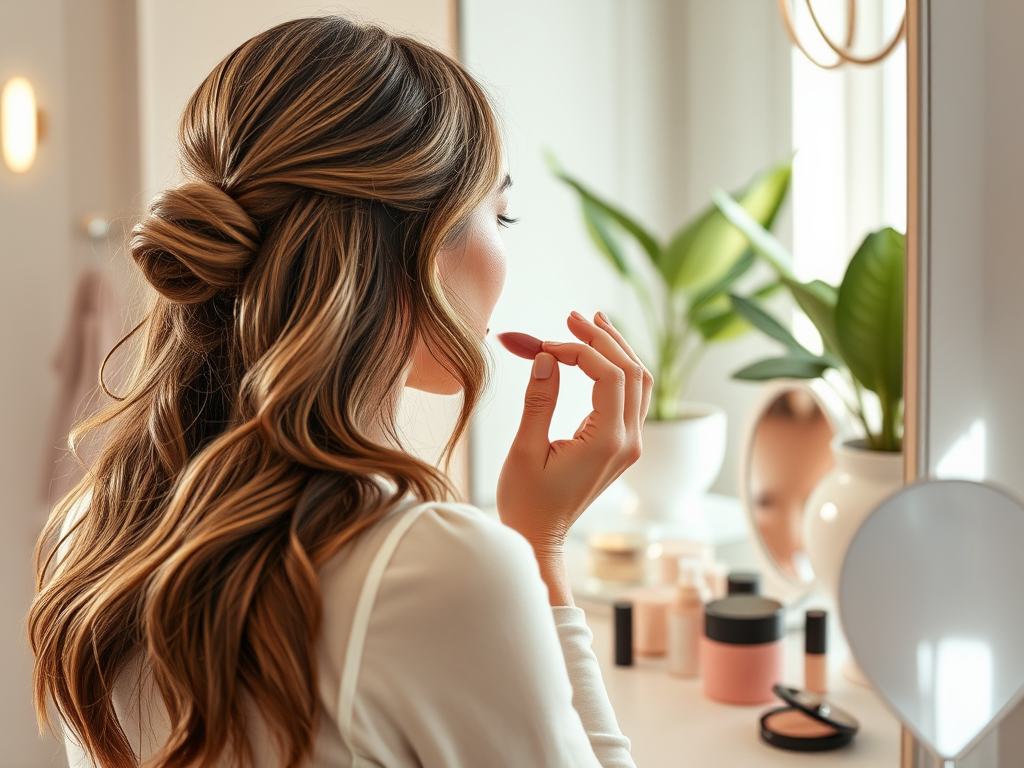Choosing the right blush isn’t just about color; it’s about finding a shade and formulation that harmonizes with your unique skin type. A well-chosen blush can elevate your makeup look, making your complexion appear fresh and vibrant. However, navigating the myriad options in the beauty world can be overwhelming. Understanding how different blushes interact with your skin type is essential for not only achieving the desired effect but also ensuring your makeup remains comfortable throughout the day. This guide aims to clarify the choices available and how to make them work for you.
Understanding Skin Types

Your skin type plays a significant role in selecting the perfect blush. It is essential to identify whether your skin is oily, dry, combination, or sensitive before making a purchase. Each skin type has specific characteristics that influence how makeup adheres and appears throughout the day. Here’s a breakdown of the most common skin types:
- Oily Skin: Characterized by excess sebum production, leading to shine and potential breakouts.
- Dry Skin: Often feels tight, may show flakiness or dull patches due to a lack of moisture.
- Combination Skin: Features both oily and dry areas, usually an oily T-zone with dry cheeks.
- Sensitive Skin: Prone to irritation and allergic reactions, requiring gentle products.
Recognizing your skin type is crucial for making informed choices about blush. Applying the wrong product may lead to discomfort or an undesired look. By pinpointing your skin type, you can select formulations that enhance your features while promoting skin health.
Types of Blush Formulations

Blush formulas have evolved significantly in recent years, and understanding your options can help you choose wisely. The most common types include powder, cream, liquid, and gel blushes, each catering to different needs and preferences. Below is a comparison of each formulation:
| Type | Best For | Finish |
|---|---|---|
| Powder Blush | Oily Skin | Matte |
| Cream Blush | Dry Skin | Dewy |
| Liquid Blush | Combination Skin | Natural |
| Gel Blush | Sensitive Skin | Light |
Each formulation not only has its benefits but also presents challenges that may affect your makeup journey. Powder blushes are often favored by those with oily skin for their shine-matting properties, while cream blushes provide hydration and luminosity for those with dry skin. Understanding these variances is the first step towards making a confident choice.
Choosing Blush for Oily Skin
If you have oily skin, focusing on products that control excess shine is essential. Look for matte powder blushes that offer long-lasting wear without adding grease to your face. Here are some tips to enhance your makeup routine:
- Opt for oil-free or matte formulations to minimize shine.
- Use a good setting spray to keep your blush in place throughout the day.
- Consider using a primer that controls oil before applying blush.
Application is also crucial. Try to apply blush with a light hand, building up the color gradually. This allows for a more natural finish and reduces the chance of excess product that may enhance shine. Patting the blush onto your cheeks instead of smearing can help maintain the desired look.
Choosing Blush for Dry Skin
For individuals with dry skin, the goal is to add moisture and a healthy glow. Cream blushes work wonders for this skin type as they hydrate and provide a dewy finish. Consider the following recommendations when choosing your blush:
- Select moisturizing cream blushes that contain ingredients such as hyaluronic acid.
- Hydrate your skin with a good moisturizer before application.
- Avoid powder formulas that may cling to dry patches.
When applying cream blush, layering is key. Start with a small amount, blending it into the apples of your cheeks, and build it gradually for a seamless appearance. This technique ensures that your blush looks fresh and radiant rather than heavy or patchy.
Choosing Blush for Combination Skin
Combination skin poses its unique challenges and requires a balanced approach when selecting blush. Typically, the T-zone may produce excess oil, while other areas are quite dry. Therefore, liquid or gel blushes are often an excellent choice for this skin type.
To maintain harmony across your face, consider these tips:
- Use a liquid blush in the center of your cheeks that blends into the rest of your skin.
- Apply a light dusting of translucent powder on the T-zone after blush application.
- Blend well where the oily and dry areas meet for a cohesive look.
Applying blush with the correct technique will ensure that your makeup appears natural. Gentle blending, starting from the center and moving outward, will help achieve a balanced gradient on your cheeks.
Choosing Blush for Sensitive Skin
If you have sensitive skin, selecting blushes made from gentle, non-irritating ingredients is crucial. Look for formulations free of fragrances, parabens, and harsh chemicals. Here are some of the best practices for using blush on sensitive skin:
- Choose hypoallergenic and dermatologist-tested products.
- Perform a patch test with a small amount to check for irritation.
- Opt for gel blushes that provide a lightweight feel without clogging pores.
When it comes to applying blush, less is often more. Use your fingers or a soft brush to apply the blush lightly, ensuring you don’t agitate your skin. This strategy keeps irritation at bay while still giving you that beautiful flush.
Choosing the Right Color Based on Skin Tone
Beyond skin type, understanding your undertone can help you select a blush that works harmoniously with your complexion. There are three main undertones: warm, cool, and neutral. Here’s how to choose blush colors for each skin tone:
- Fair Skin: Opt for soft pinks, peaches, or light corals.
- Medium Skin: Try rosy hues, warm mauves, or berry tones.
- Deep Skin: Consider deep berries, plum shades, or bold apricots.
By selecting the appropriate color, you can achieve a naturally radiant look that complements your overall makeup. Don’t be afraid to experiment with different hues to discover what makes you glow.
Conclusion
Finding the ideal blush for your skin type can be a game changer in your makeup routine. From understanding your skin type and its needs to exploring various formulations and colors, the journey to the perfect blush can be enjoyable and rewarding. Remember to test a few products to discover which ones you feel most comfortable wearing. Each individual is unique, and experimenting is part of the fun of makeup.
Frequently Asked Questions
- What blush is best for oily skin? Powder blushes or matte formulations are recommended to control shine.
- How can I make cream blush last on dry skin? Use a hydrating primer and set with a light translucent powder to lock in moisture.
- Can I use the same blush for day and night looks? Yes, choose versatile shades that can be layered for day and night looks.
- What should I avoid if I have sensitive skin? Stay away from harsh chemicals, fragrances, and products with parabens.
- How do I find my skin undertone? Check the color of your veins: blue or purple indicates cool undertones, green suggests warm undertones.
- What type of blush is easiest to apply for beginners? Cream blush is often easier to blend for beginners.


